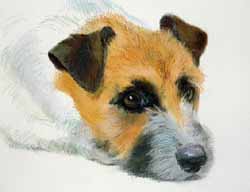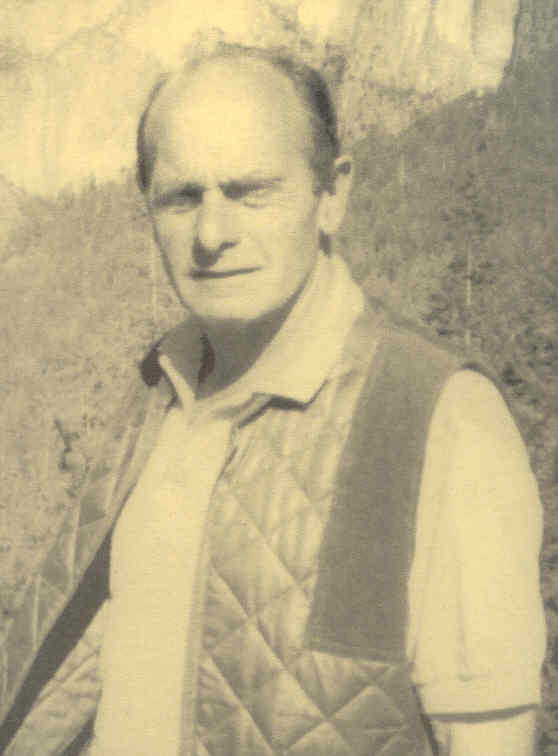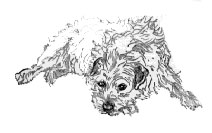|
|

Spanning
the Jack Russell Terrier
by
Barry Jones
 Barry Jones
passed away Sept. 15, 1999. He was one of
Britain's most dedicated terriermen and was
professional terrierman to the Cotswold
Foxhounds in Andovers Ford, and a former
Chairman and President of the Fell and
Moorland Working Terrier Club, and the
founding Chairman of the National Working
Terrier Federation. Barry Jones
passed away Sept. 15, 1999. He was one of
Britain's most dedicated terriermen and was
professional terrierman to the Cotswold
Foxhounds in Andovers Ford, and a former
Chairman and President of the Fell and
Moorland Working Terrier Club, and the
founding Chairman of the National Working
Terrier Federation.
The chest is, without doubt, the
determining factor as to whether a terrier may follow its
intended quarry underground. Too large and he/she is of
little use for underground work, for no matter how
determined the terrier may be, this physical setback will
not be overcome in the nearly-tight situations it will
encounter in working foxes. It may be thought the fox is
a large animal - to the casual observer it would appear
so. However, the bone structure of the fox is finer than
that of a terrier, plus it has a loose-fitting, profuse
pelt which lends itself to flexibility. I have not
encountered a fox which could not be spanned at 14 inches
circumference - this within a weight range of 10 lbs to
24 lbs, on average 300 foxes spanned a year. You
may not wish to work
your terrier. However, there is a Standard to be
attained, and Spannability is a must in the Parson
Russell Terrier.
How
to span?
With so many variations of hand size a more precise
statement of average hand span is required. The way I
find easy to explain is to take a round object of four
and a half inch diameter, place your two thumbs and index
fingers together forming a circle - this is your span.
Some will not be able to cover the entire distance,
others will have an overlap. Either way, when spanning
the person will bear in mind their "plus or
minus" factor and be able to gauge the four and a
half inch diameter, which is approximately 14 inches
circumference. This size of chest in a terrier of 12
inches to 14 inches height will look and be balanced,
allowing heart and lung room, with the flexibility to
follow its quarry in underground work. Regarding the
shape of the chest -- this should not of course be round
(barrel-chested), rather the shape of an egg in profile,
large end uppermost, allowing free movement of the
forelegs. Too large a chest will put out the elbows
causing poor movement, so it is not only from a working
point that the chest should be of the correct size.
"I have not
encountered a fox which could not be
spanned at 14 inches circumference - this
within a weight range of 10 lbs to 24
lbs, on average 300 foxes spanned a
year."
|
Where
to span?
Approach the terrier with its full knowledge of being
handled -- do not grab or suddenly place hands. With the
terrier on the ground, not more than the forelegs off the
floor, place hands in a direct line down around the chest
directly behind the elbows. The lifting of terriers off
the ground, sometimes to chest height, and in extreme
cases higher, causes distress and tenseness.
I cannot recall any guidelines for spanning apart from
the average hand size, which of course does not exist!
This method is what evolved with the working and judging
of terriers. I find it works well with practice and a
little forethought. Maybe there is a better idea?

|
|
|
